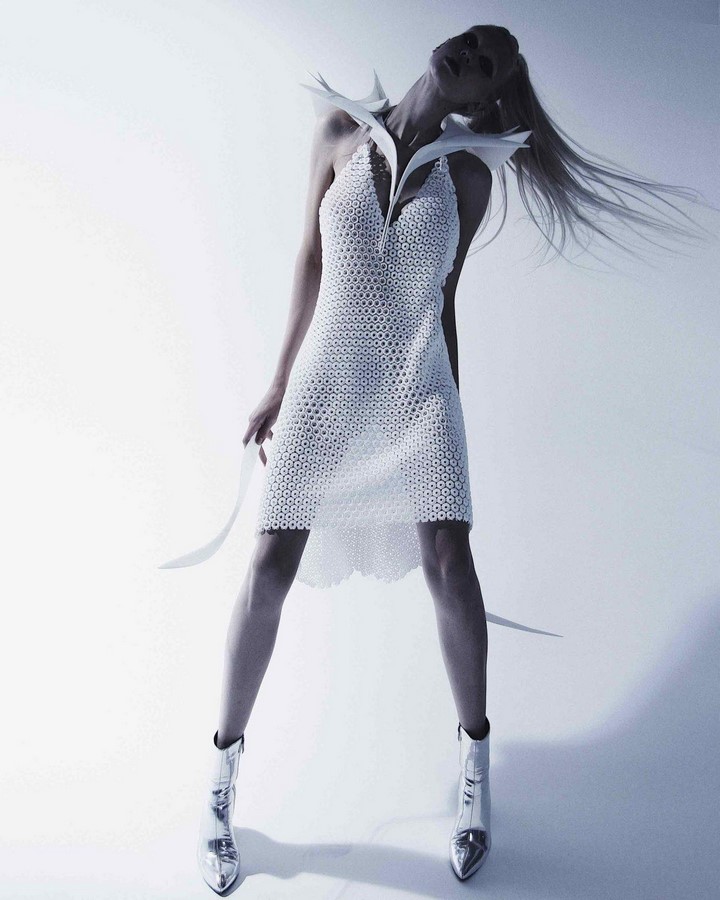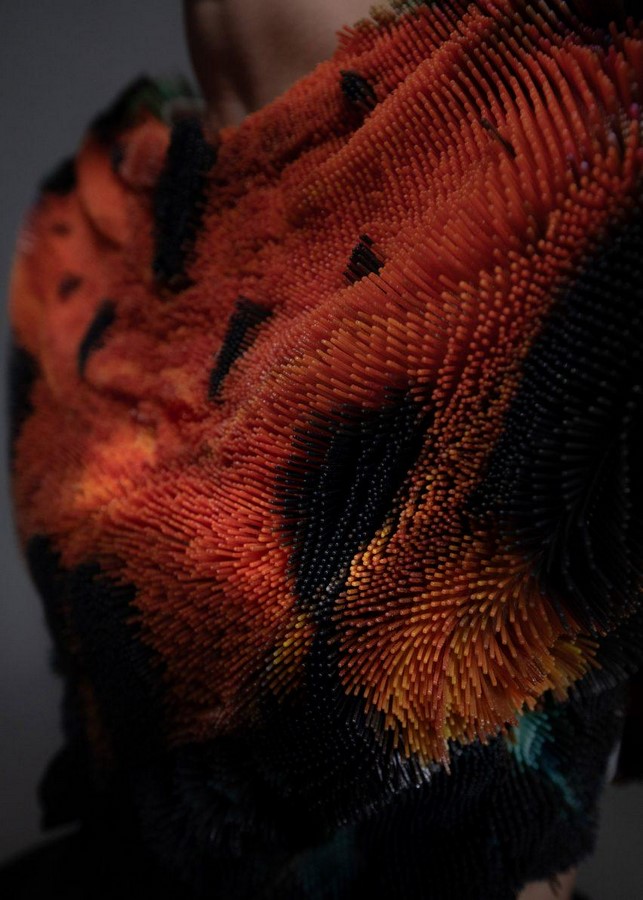Design and its Extension
Through its principles of form, function, and innovation, architecture, which is typically connected with the design and construction of buildings, spreads its impact into other industries like fashion. Fashion designers work with fabric to create wearable structures that improve the human experience, just like architects do with physical places. Both professions need a keen awareness of ergonomics, aesthetics, and proportion. Clothing designs that flatter the body and exude a feeling of harmony may be created by transferring architectural principles like symmetry, balance, and spatial organization. Furthermore, fashion’s constantly changing trends reflect architecture’s emphasis on invention and adaptation. Sustainable architectural practices have paved the path for sustainable manner by supporting eco-friendly building materials and methods. The idea of creating for certain situations and purposes is similar to that of architecture, except one creates wearable art. It coincides with the usefulness and practicality that are fundamental to clothing design, from work clothes to athletic wear.

Similarities Between Fashion and Architecture
The pioneering effects of the collaborations between fashion designers and architects may be observed in the concept shops and cutting-edge runway displays. The limits of both disciplines are pushed by this multidisciplinary approach, which also encourages innovation. Ultimately, the effect of architecture on fashion shows how design principles may extend beyond their initial fields. The concept of form and function is thus not restricted solely to architecture but extends beyond into other creative fields as well. It influences and innovates in the fashion industry, by showing several design movements and styles that have inspired both fashion over time. Early 20th-century minimalism, clean lines, and the use of industrial materials are characteristics of modernism. This design is known for classic buildings like the Bauhaus educational facilities. It inspired the design of minimalist apparel that emphasized utility and geometric forms in fashion. Geometric designs, vibrant colors, and luxury are hallmarks of Art Deco. It may be seen in the way public buildings and skyscrapers are designed. Art Deco inspired glitzy, elaborate, and embellished apparel in the fashion world. Designing with futuristic aesthetics means being fascinated by technology and the future. It can result in designs that use futuristic components like metallic materials, asymmetrical geometries, and high-tech textiles in both buildings and clothing. While architecture is art one can reside in, fashion becomes wearable art.

Parametricism is Experimentation
The parametric design technique relies on a cycle of repeated feedback since it is based on computer algorithms and parametric modelling. It has the potential to connect the worlds of architecture and fashion. The foundation of this technology is the manipulation of parameters to produce intricate, dynamic structures. Although originally used in architecture, the fashion industry has adopted its concepts. Customization and individualized manufacturing are made possible by parametric design. Parametric modelling in architecture permits the design of distinctive buildings that are adapted to certain environments. Similar to this, it may be used to create clothing that is tailored to a person’s body type and preferred fashions, revolutionizing the idea of bespoke clothes. It is viewed as a possible response to the meticulously designed avant-garde wearable art developed by fashion firms worldwide. The parametric design technique relies on a cycle of repeated feedback since it is based on computer algorithms and parametric modelling.

Using Parametrics in Fashion
Fashion designers may be motivated to investigate unusual fabrics and manufacturing techniques by architects who are experimenting with cutting-edge materials and fabrication techniques. Natural bio-composite materials and even soft plastic that has been 3D printed onto a foundation cloth are examples of possible materials. Cross-pollination can result in the creation of eco-friendly and cutting-edge fashion materials. The designs emphasize performance and aesthetics while blending form and function to create this wearable art. This all-encompassing approach may be used in the fashion industry to design apparel that not only has a pleasing aesthetic but also serves functional needs, such as wearable electronics or clothes that can adjust to varied weather conditions. The use of parametricism in avant-garde fashion involves a complex creative process. It starts with a conceptual vision, in which designers see the shape, use, and aesthetics of their clothes. Then, these conceptions are given life by the use of digital parametric modeling tools like Grasshopper for Rhino or specially created scripts. Designers may alter settings using these tools to produce complex and dynamic designs. As the generative design process progresses, innumerable iterations may be explored, encouraging creativity in form and structure. This is important in creating wearable art. Following that, carefully picked materials are chosen, paying close attention to how certain textiles interact with parametric structures. Digital prototypes are created to simulate the design’s look in the actual world, ensuring that it satisfies both artistic and utilitarian requirements. Wearability is refined via rigorous testing and iteration to ensure that the garment moves in harmony with the body.

Designers Creating Wearable Art
Dutch fashion designer Iris van Herpen is well known for her avant-garde and couture designs that expertly combine art, technology, and clothing. She has pushed the limits of what clothes can be by becoming a pioneer in the usage of 3D printing and parametric design in the fashion industry. The “Voltage” collection, which includes eye-catching costumes that seem to be fashioned out of electric currents, is one of her most well-known pieces. These outfits have airy and futuristic shapes thanks to the use of complex parametric designs that are 3D printed layer by layer. Van Herpen challenges preconceived concepts of fashion with his ability to turn computer designs into wearable art, demonstrating the potential of technology to produce beautiful and sculptural apparel. The architect and designer Francis Bitonti is renowned for pushing the limits of fashion and digital fabrication. His work frequently examines the nexus between art, design, and technology. With his “Molecule Dress,” a 3D-printed dress that demonstrates the promise of parametric design and additive manufacturing in fashion, Bitonti became well-known. The garment has a complex lattice-like design that is suggestive of molecular structures. This fusion of science and fashion demonstrates the limitless potential of digital design and 3D printing in producing distinctive and eye-catching clothing.

Refernces:
Shakeri, S. (2022) 10 fashion-tech designers revolutionizing the fashion industry –, Parametric Architecture. Available at: https://parametric-architecture.com/10-fashion-tech-designers-revolutionizing-the-fashion-industry/ (Accessed: 09 October 2023).
Ferrier, M. (2014) Francis Bitonti, the dress designer applying architecture to 3D printed couture, The Guardian. Available at: https://www.theguardian.com/technology/2014/sep/22/fashion-dress-made-3d-printer (Accessed: 09 October 2023).
Juras, S. (2022) Alternative fashion materials, xLab. Available at: https://xlab.qatar.vcu.edu/Alternative-Fashion-Materials (Accessed: 09 October 2023).
















